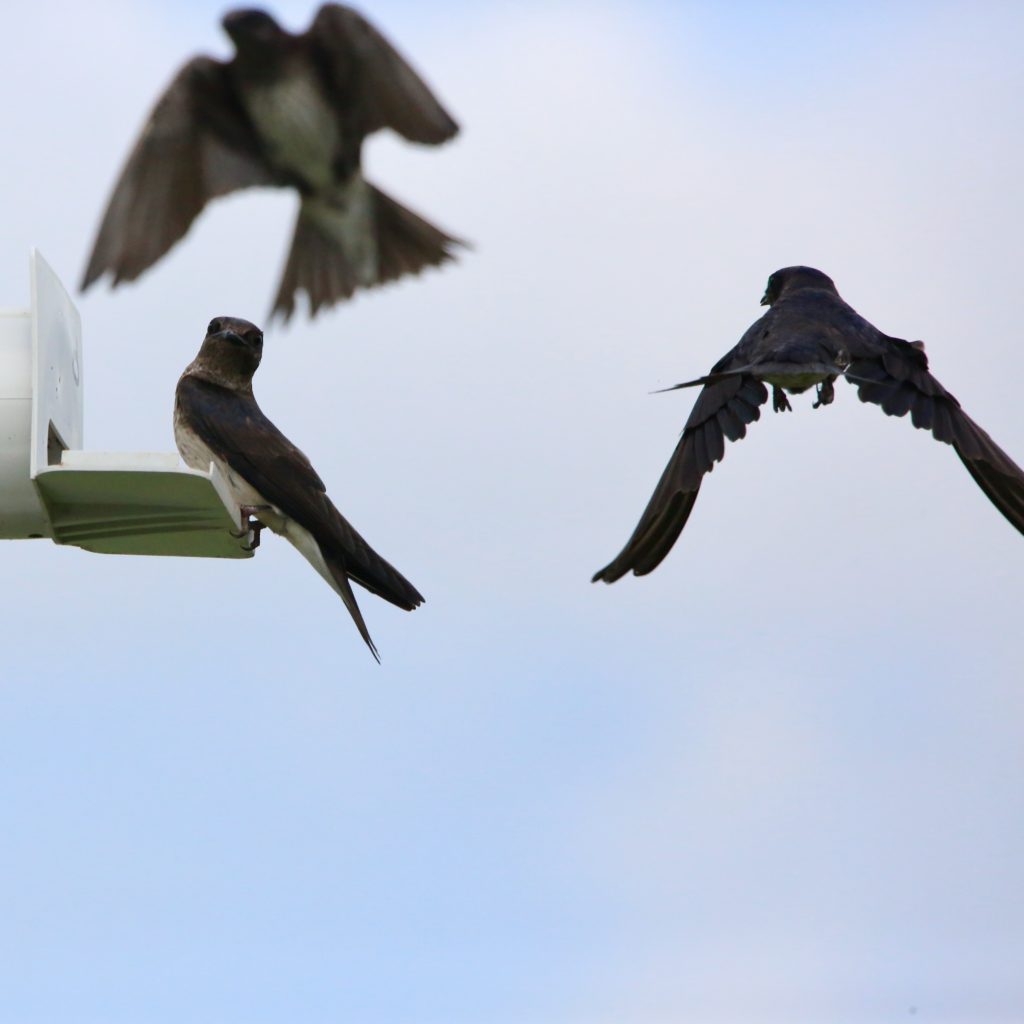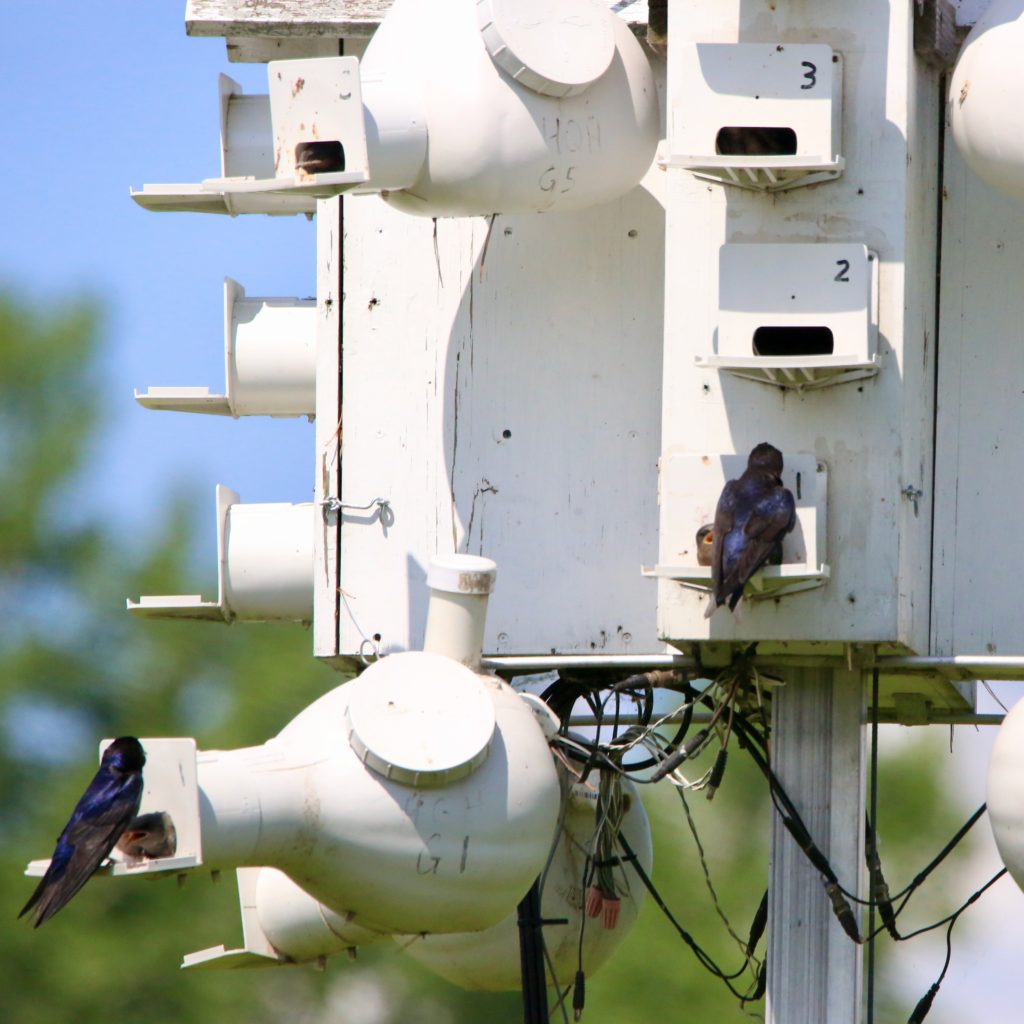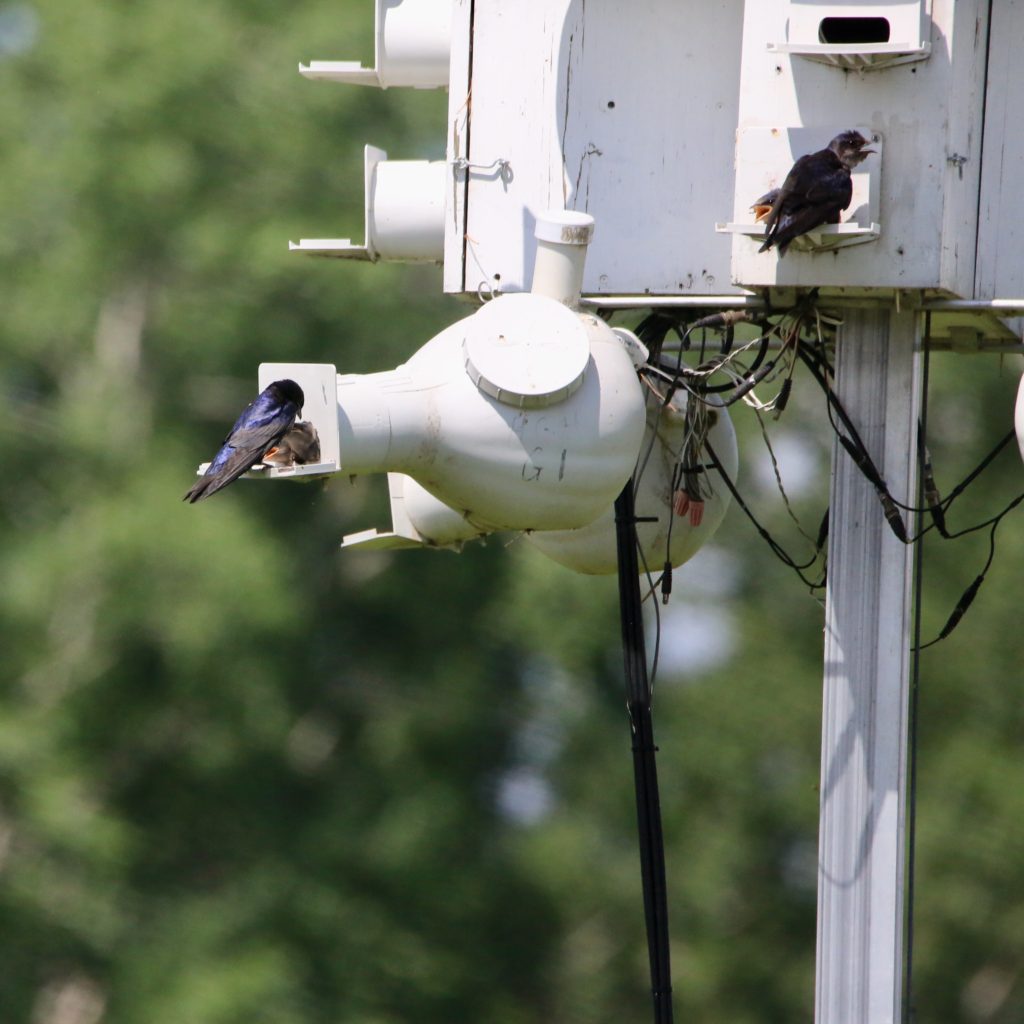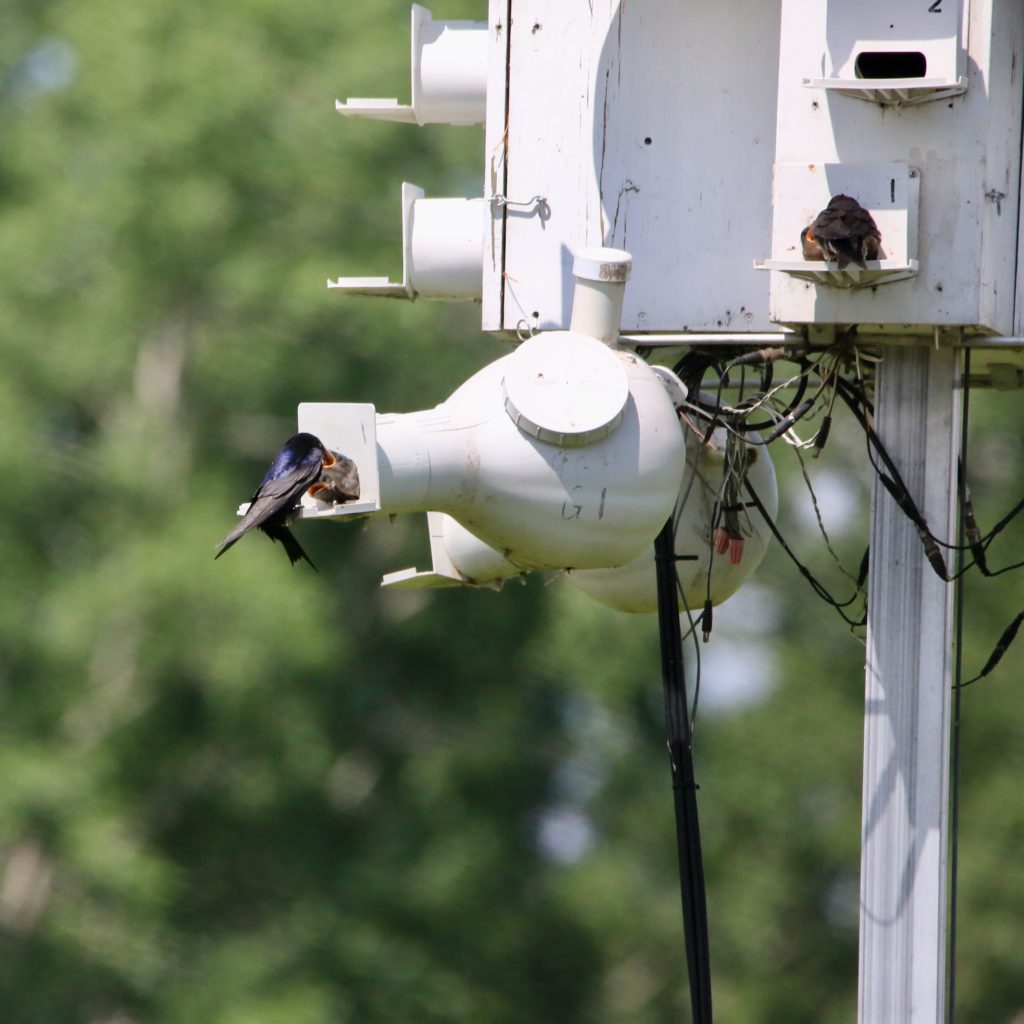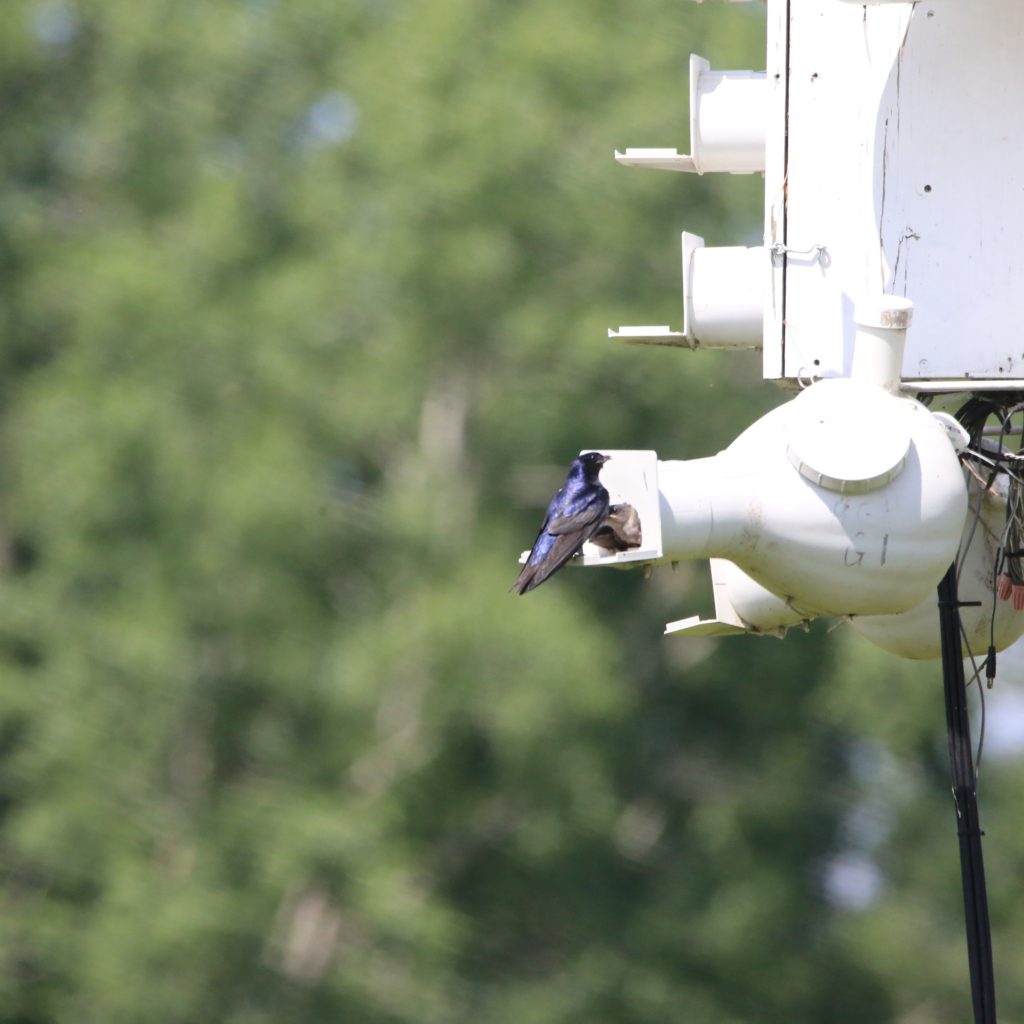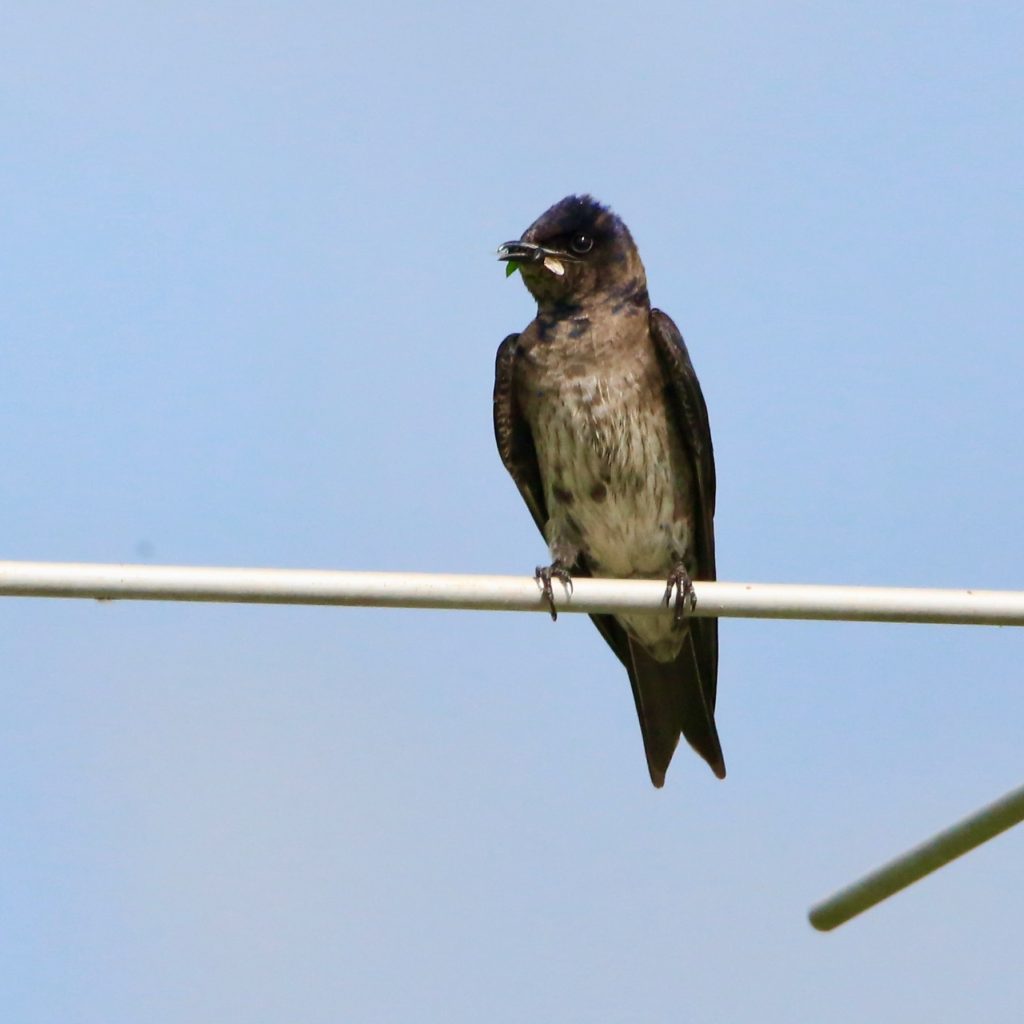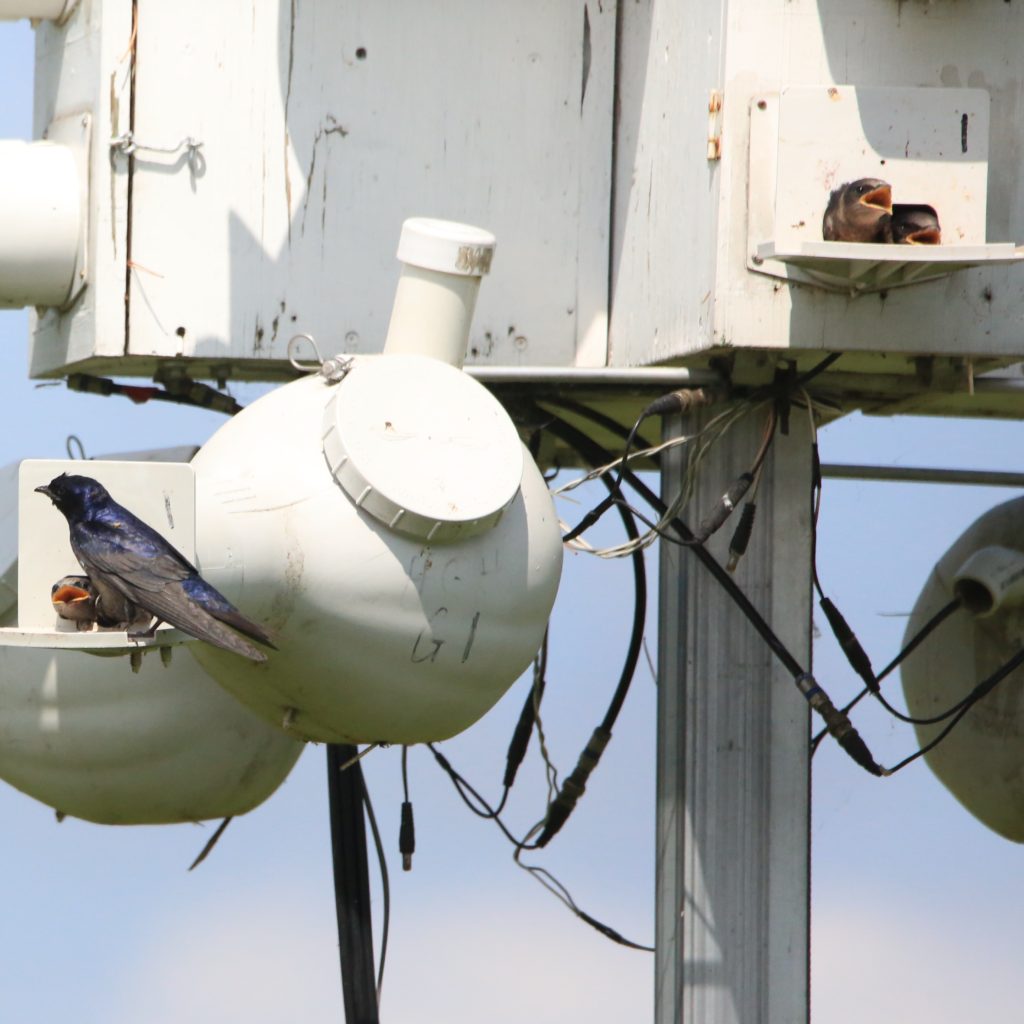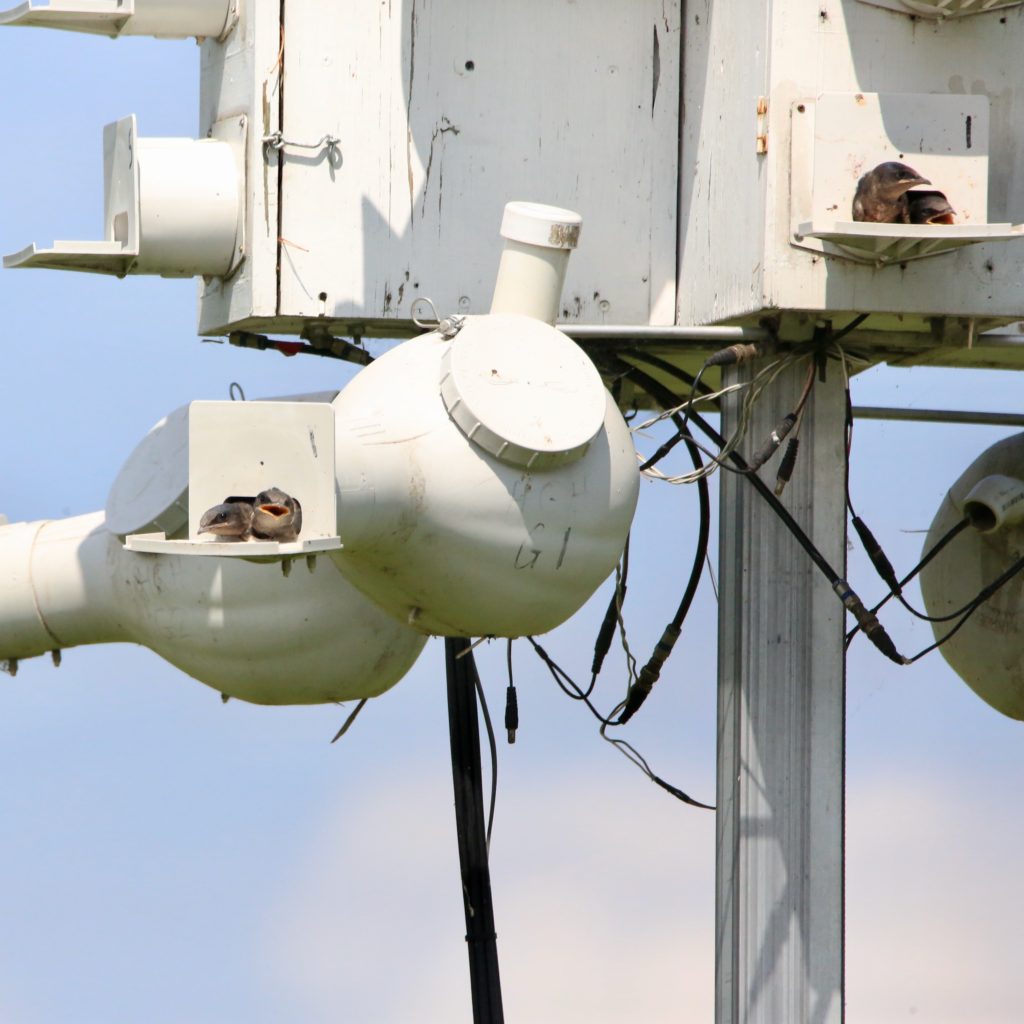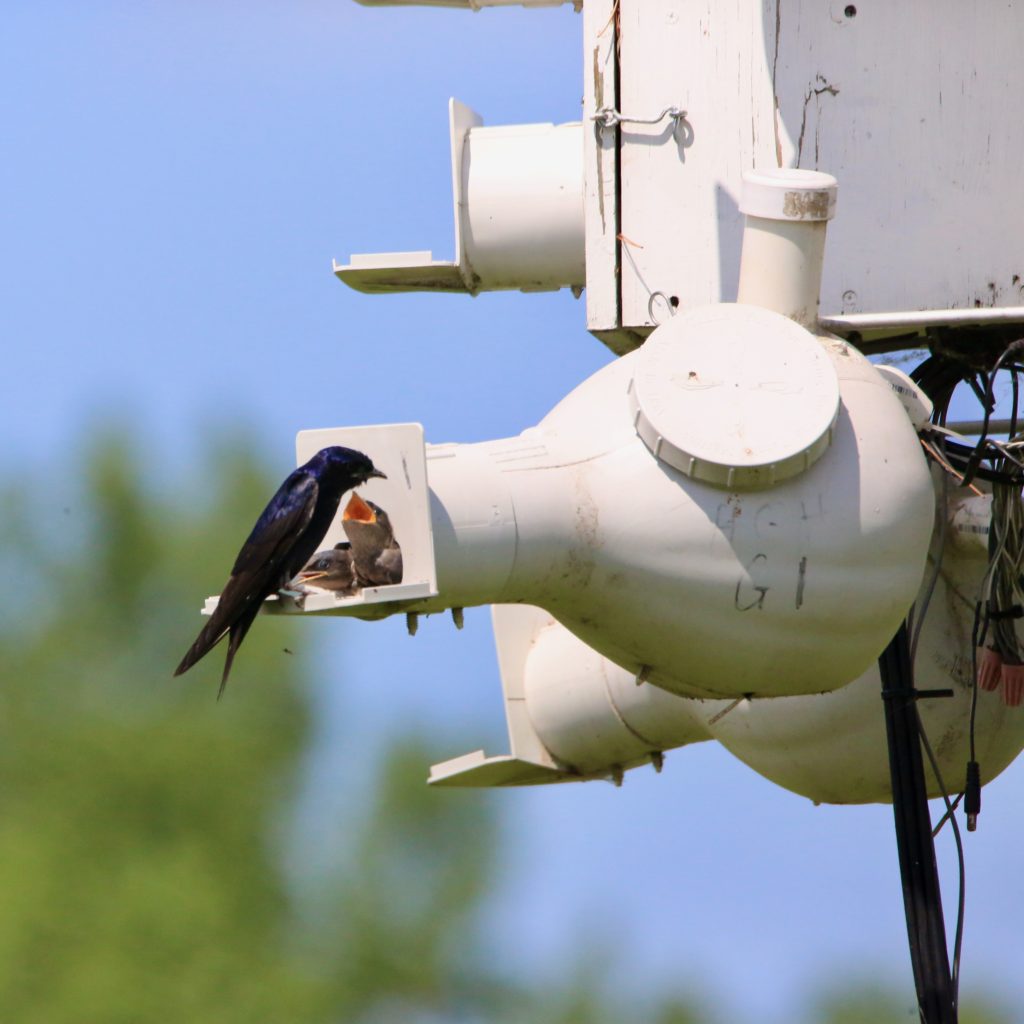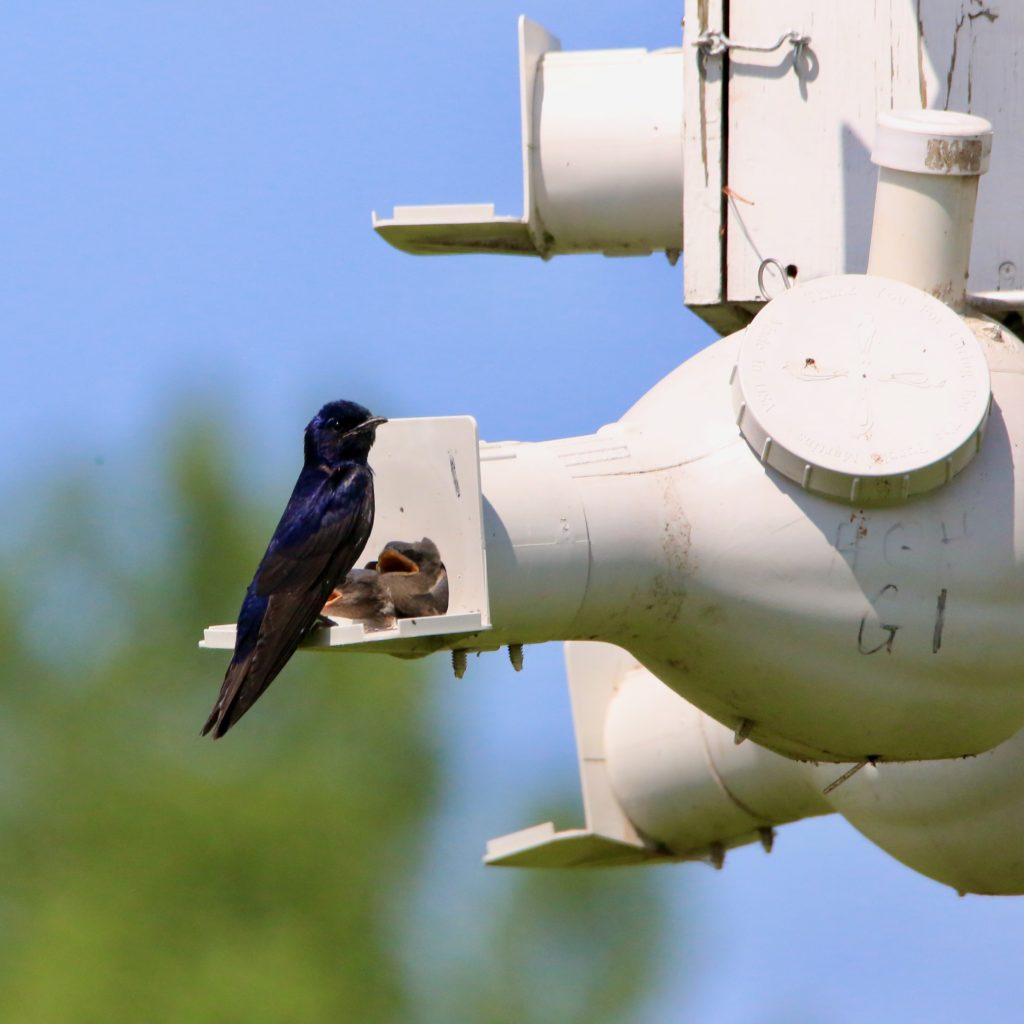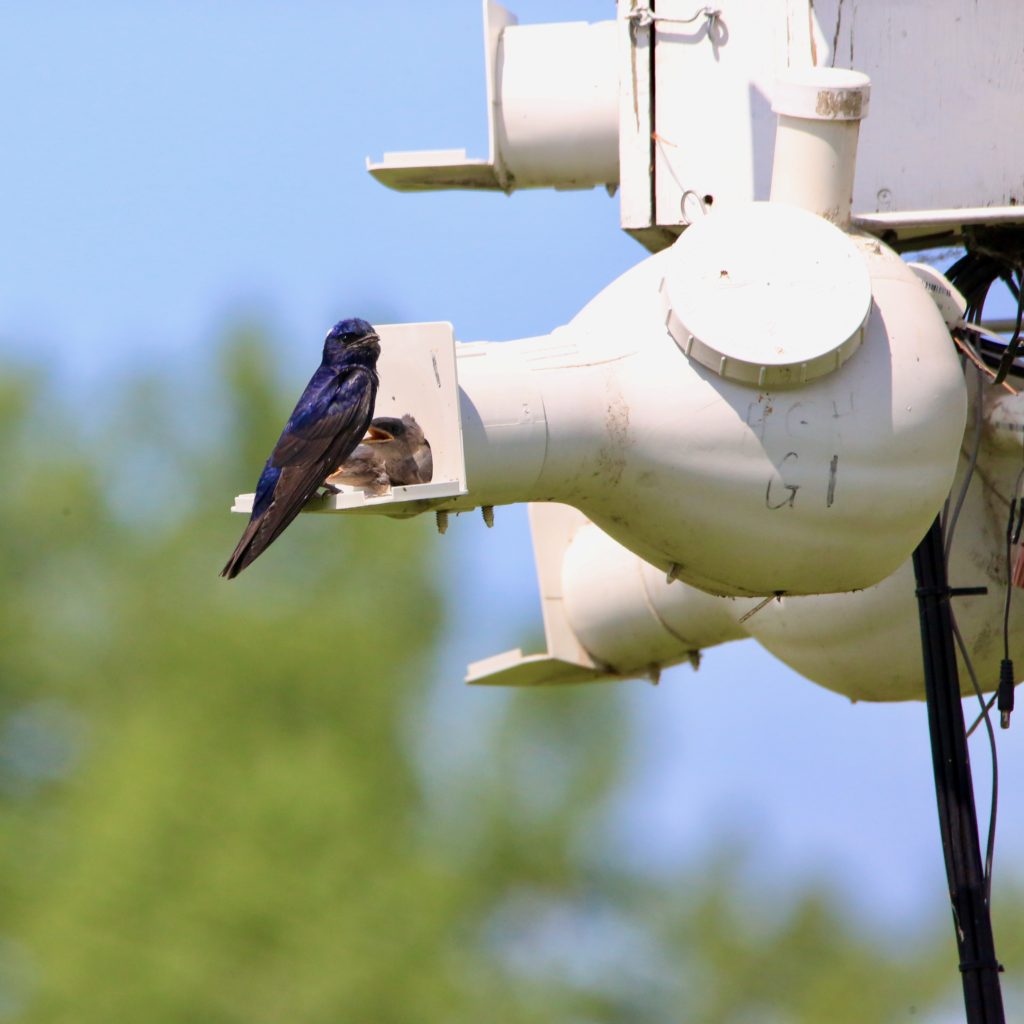
Purple Martin
A Purple Martin is a fun bird to see while bird watching. Below are some tips to help you identify Purple Martins. We have also put together a list of fun Purple Martin t-shirts, Purple Martin bird patches, bird houses, bird feeders, binoculars, stickers and other fun bird watching items.
About Purple Martins
The purple martin is the largest bird in the American swallow family. Swallows are relatively common birds that are found everywhere in the world except the artic. This particular breed is world renowned for their speed and agility in flight. The purple martin is the most sought-after bird in this genus for its animated personality and purling songs.
Description and Identification
Purple Martins are not truly purple; their dark blackish-blue feathers have an iridescent sheen giving them a bright blue to navy blue or deep purple appearance. Adult male martins are entirely black with glossy steel blue sheen. In comparison, adult female martins are dark on top with some steel blue sheen and lighter parts. Both male and female martins have a slightly forked tail. Though the juvenile females look similar to adult females, they don’t have steel blue sheen, and they don’t have brown on their back. In juvenile males, solid black feathers emerge on their chest in a blotchy and random pattern.
Purple Martin Size
The purple martin has an average length of 19.5 to 22 cm and a wingspan up to forty cm. this bird is rather lightweight weigh in at 12 to 55 grams.
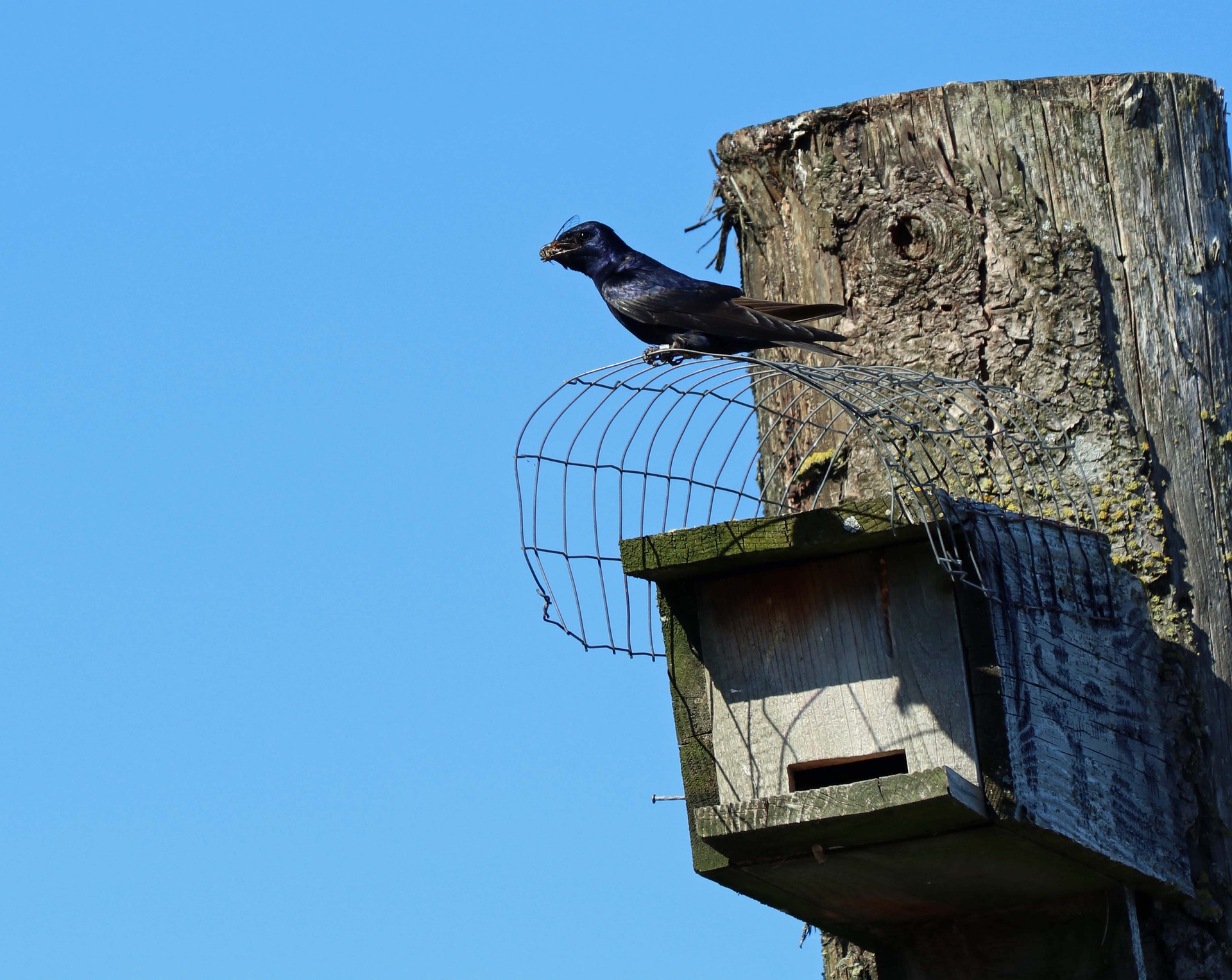
Purple Martin Color Pattern
The purple martin didn’t derive its name from its appearance as the bird is not actually purple. Its feathers are dark blue-black with an iridescent sheen. These feathers have also been reported to display a bright blue and deep purple color depending on the light and angle.
The male purple martin is distinguished by its dark belly. Bird watchers need to, however, take care not to mix this breed of birds with swifts. The swifts also have a dark underpart.
What Purple Martin Eat
Purple Martins are agile hunters, and they primarily feed on a variety of insects, including many wasps, some bees, and winged ants. The martins also consume true bugs, flies, beetles, moths, and butterflies. Contrary to popular belief, mosquitoes do not form a major part of their diet; dragonflies are an important part of their diet. The birds also eat some spiders, crickets, grasshoppers, and mosquitoes. Rarely, the birds come to the ground to eat insects and fly relatively high. They search for food much higher than most other swallows do, usually more than 150 ft. off the ground.
Purple martins are insectivorous birds. They feed on flying insects such as moths and mosquitoes. These birds hunt their prey in the air and use their agility and speed to eat in midair. These birds also drink water in flight by flying over water bodies.
Where Purple Martins Live and Their Habitat
Purple Martins prefer to forage in open areas, such as towns, farms, and semi-open country near water. In the west, they are found in mountain forests and the saguaro desert. In the east, the martins breed in any kind of semi-open area where nest sites are provided, especially near a pond or river. Their favourite foraging grounds include meadows, grasslands, over lakes and ponds, near beaver dams, and flooded pastures. Purple Martins also inhabit urban areas, like farms and cropland, as well as parks and gardens.
The birds are migratory and travel from North America in the summer to South America in the winter.
Nesting
Their primary place for nesting in the cavity. After forming a pair, both males and females inspect their available nest sites. Both male and female martins visit several cavities before choosing a site. The cavity is mostly in a birdhouse, gourd, dead tree, saguaro cactus, building, cliff, or in some other structures like traffic lights, street lamps, dock pilings, or oil pumps. Male Purple Martins will sometimes have more than one mate; they return to nesting areas first in spring and establish nesting territories. Western martins may nest in looser colonies or as isolated pairs. Male martins arrive in breeding sites before females and establish their territory. Purple Martins are known to raise only a single brood.
Range and Migration
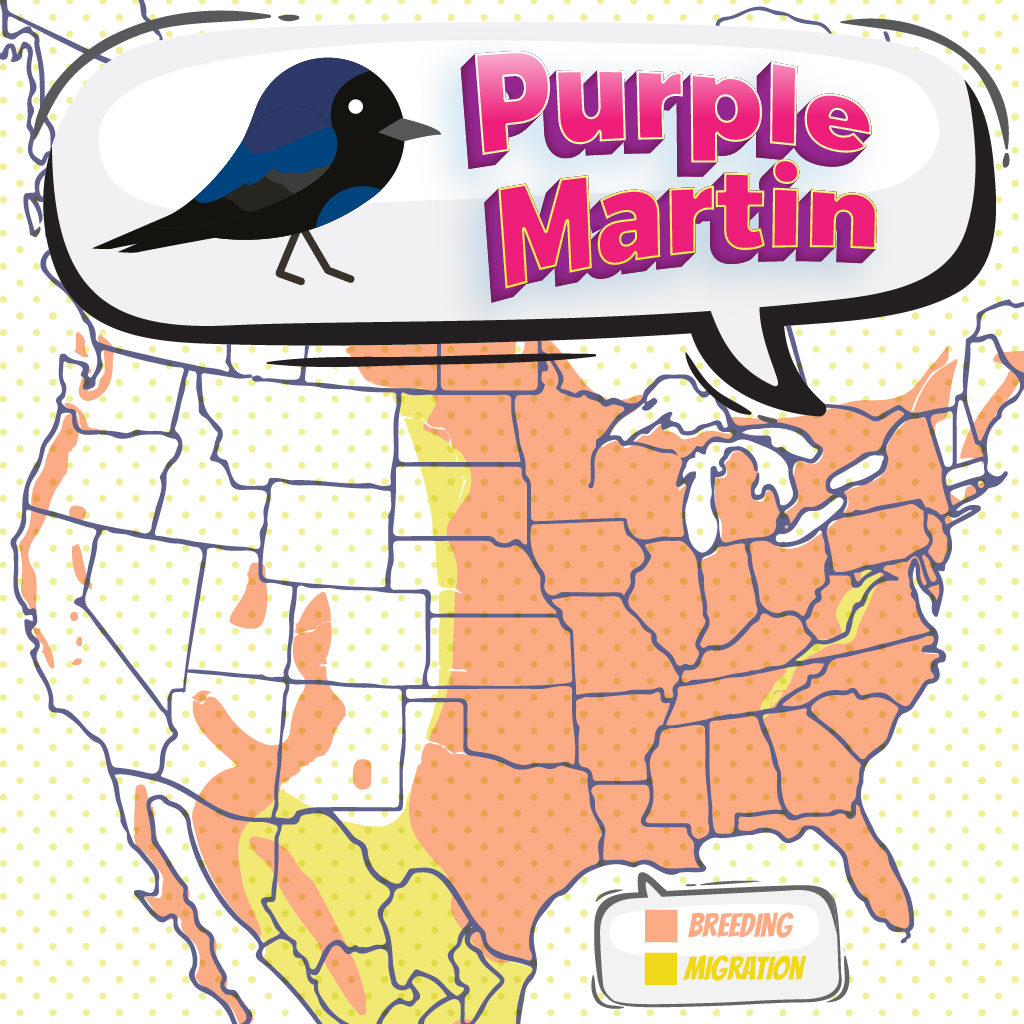
Purple Martins are the largest swallows in North America. Their breeding range extends from central Alberta down through the eastern United States. These birds spend their non-breeding season in Colombia, Venezuela, Ecuador, Peru, Bolivia, Argentina, Brazil, British Guyana, Paraguay, Suriname, and French Guiana. They are long-distance migrants and form huge roosts in late summer along the Gulf Coast from Texas to Florida. Others might fly over to Mexico and through Central America. Purple Martins are leisurely migrants who fly during the day and are among the earliest South American migrants to arrive in the spring. Purple Martins migrate to the Amazon basin in winter, and their winter range extends into Ecuador.
Purple Martin Behavior
The male’s purple martins migrate to breeding sites before their female’s counterparts. They then establish dominance over a territory. After forming a pair, both the male and female purple martins move into a suitable nest where the eggs are laid. The birds lay four to seven eggs and the female incubates them while the male helps. The parents stick with the young till they are ready to leave the nest. The parents still take care of the young after this period.
Ornithology
Bird Watching Academy & Camp Subscription Boxes
At Bird Watching Academy & Camp we help kids, youth, and adults get excited and involved in bird watching. We have several monthly subscription boxes that you can subscribe to. Our monthly subscription boxes help kids, youth, and adults learn about birds, bird watching, and bird conservation.
Bird Watching Binoculars for Identifying Purple Martins
The most common types of bird watching binoculars for viewing Purple Martins are 8×21 binoculars and 10×42 binoculars. Bird Watching Academy & Camp sells really nice 8×21 binoculars and 10×42 binoculars. You can view and purchase them here.
Purple Martin T-shirts
If you love the Purple Martin you should purchase a Bird Watching Academy & Camp T-shirt. To help support bird conservation we donate 10 percent to bird conservation activities.
Purple Martin Iron On Patches
Kids, Youth, and Adults love to collect our Bird Watching Academy & Camp iron on patches. Our bird watching patches help you keep track of the birds you have seen an identified. You can also display the patches on our Bird Watching Academy & Camp banners.
The Purple Martin is a great iron on patch to start your collection with. The patches are durable and can be sewn on or ironed on to just about anything.
Purple Martin Stickers
Stickers are a great way for you to display your love for bird watching and the Purple Martin. We sell a monthly subscription sticker pack. The sticker packs have 12 bird stickers. These sticker packs will help your kids learn new birds every month.
Bird Feeders For Purple Martin
There are many types of bird feeders. Here are our favorite bird feeders for your backyard. We use all of these bird feeders currently. Kids will have a great time watching birds eat at these bird feeders. Using this collection of bird feeders will provide a wide variety and many types of birds.
Best Bird Houses for Purple Martin
There are many types of bird houses. Building a bird house is always fun but can be frustrating. These 4 bird houses have become our favorites. Getting a bird house for kids to watch birds grow is always fun. We spent a little extra money on these bird houses but they have been worth the higher price and look great.






